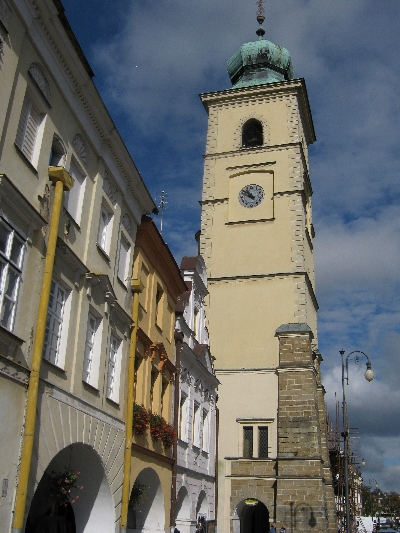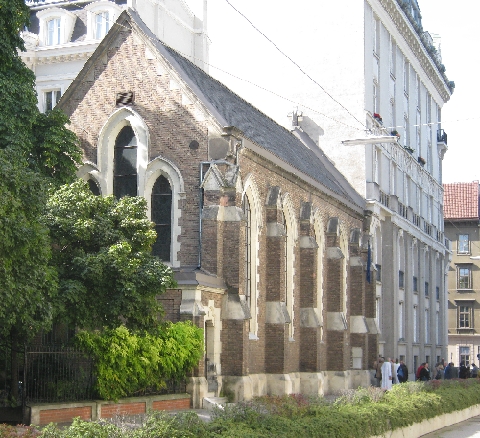
The modern-day state of the Czech Republic is made up of what was historically known as Bohemia and Moravia, together with a small part of Silesia. Bohemia forms the western part of the country with Prague at its centre, whilst Moravia forms the eastern part where the country’s second city Brno, is located. The bulk of Silesia now lies in Poland with only a very small part being contained within the borders of the Czech Republic, in the far north-eastern corner of the country.
On the afternoon of Thursday 30th September, we drove from Litomyšl, which is in East Bohemia, further eastwards into South Moravia, to the little town of Vizovice. The main claim to fame of Vizovice is that the very best variety of Slivovice (Czech plum brandy) is distilled within the town, a fact that we were told every time we ever mentioned that we were going there!
We spent from that Thursday evening, through to lunchtime on Saturday 2nd October, in a simple but pleasant ‘glorified youth hostel’, located in the beautiful wooded hills above Vizovice, attending the synod of the Old Catholic Church in the Czech Republic. We were given the synod dates after we had booked our holiday dates so decided to incorporate our synodical attendance into our travel plans. As the discussions were all in Czech and mainly about a new Church constitution which was finally adopted early on the Friday evening, I won’t write anything more about it here in this blog post other than saying that we were very well looked after and enjoyed the fellowship.
Following the end of the synod, we left Vizovice and set off to drive through the beautiful wooded hills of the far east of Moravia. Our journey took us through numerous small towns and villages, many of which welcome walkers and cyclists in summer and skiers in winter. Our scenic journey briefly took us across the border into Slovakia before, a few km later, we returned to the Czech Republic. Soon afterwards, we passed through the village of Bílá and spotted this beautiful wooden Church. Apparently, there are only a few of these in Moravia but are more commonly found in Slovakia.
We ended the day in the somewhat industrial town of Ceský Tešín which is located in the Czech part of Silesia. In many respects, Ceský Tešín is only half a town – the other half lies across the Olše River in Poland and is called Cieszyn. As part of the settlement that followed the end of the First World War, in July 1920 the town was divided between the newly formed nation of Czechoslovakia and Poland, using the natural divide of the Olše River.
Having found a very pleasant and reasonably priced room in the Central Hotel in Ceský Tešín, we decided to take the advice of our guidebook which declared that the most interesting and historic parts of the town were on the other side of the river. So we set out on a short walk and crossed Hlavní Most, one of the two bridges across the Olše, and entered Poland, the first time I had ever set foot in the country and only the second time that Sybille had.
Unfortunately, it was just getting dark as we walked up a cobbled street into the main square of Cieszyn so I don’t have any pictures though we were able to enjoy the architecture as some buildings were floodlit. And after Sybille had withdrawn some Zloty from a Polish ATM, we enjoyed a pleasant drink and meal in a bar-restaurant on the main square before returning across the river to our bed in the Czech Republic.

The next day being Sunday, we joined the congregation who worship in this rather unusual Church. It is located behind a supermarket and the building was formerly a flower shop and a shoe repair shop! Now it is the Chapel dedicated to the late Brother Roger of Taize where a small Old Catholic congregation worship, led by Dr Cezary Mizia. Cezary is Polish and was originally a Roman Catholic priest. He conducted the service, partly in Czech and partly in Polish. He preached in Czech and English for our benefit!


After the service, we walked with Cezary’s wife Alice and their little baby Jeremias, back over the border into Poland where I took this photo from the castle mound looking down on Hlavní Most and the Olše River. We did this whilst Cezary was busy back in their apartment, preparing lunch for us all. Lunch was a little like French Sunday lunch with innumerable courses! However, it did have a Polish flavour as Sybille & Cezary both downed at least three shots of Polish vodka which had to accompany certain courses! Alice and I were fortunately able to avoid the vodka as we both had the excuse of needing to drive later in the day.
It was late afternoon on Sunday 3rd October before we finally bid farewell to Cezary, Alice & Jeremias and set out once again to explore more of the Czech Republic. Before doing so, I helped with feeding Jeremias his lunch as you can see below!


















